| 1 | Tiger snake |
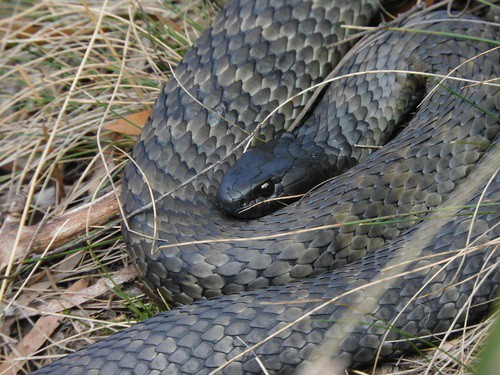
Tiger snakes inhabit Australia’s east coast up to Sydney and Brisbane, but are especially common in the southern state of Victoria. They average at 120cm, and unleash blood clotting mayhem by artificially accelerating the production of clotting factors like fibrin, leaving no supplies left.
Except for parched outback, the tiger snake can go wherever it pleases. As long as there’s sufficient moisture, they can occupy woodlands, meadows, slither down hiking trails, and investigate farmland all the same. Nor are urban streets off limits.
Tiger snakes control southern Australia just as much as the local humans. In fact, they’ve been there far longer. If a tiger snake comes across a road or river, it reacts the same way: just keep ploughing ahead and instantly cross the obstacle, to complete its snake objectives like hunting emerald spotted frogs, avoiding goshawks and kookaburras, and other secret goals they’re not revealing.
Neighbouring snakes: the Stephen’s banded snake requires trees to survive. It’s skilful in climbing those trees, reaching 25 metres high, but remove them, and they’ll wither away and evaporate.
| 2 | Central American coral snake |

Coral snakes (Micrurus family) usually aren’t the most flexible, sticking to leafy forest floors with thick mulch they can hide in. However, a chosen few are hardier, particularly the Central American coral snake (Micrurus nigrocinctus). This species has classic yellow-black-yellow patterns, followed by long red spaces. Their venom has strong paralysis potential, and they’re definitely a threat to take a long, nervous step over.
Micrurus nigrocinctus appears in cultivated fields, dense forests, meadows, and sparse woods alike. They even appear in back gardens, rummaging around for fellow snakes to eat. This is never a fast, hyperactive species. They love to lurk on the ground (occasionally climbing bushes) and won’t bother you if you don’t bother them. But they make entering Central America a more cautious affair than it needn’t be.
Micrurus nigrocinctus inhabits 9 countries, including southern Mexico, northwest Colombia, and all 7 Central American countries inbetween. Their flexibility has allowed them to take over, pushing neighbours like Allen’s coral snake into narrower slices of land.
Neighbouring snakes: the ringed tree boa lives only in dark, dense forests, never leaving, and then is found clinging to branches up to 40 metres high.
| 3 | Boa constrictor |
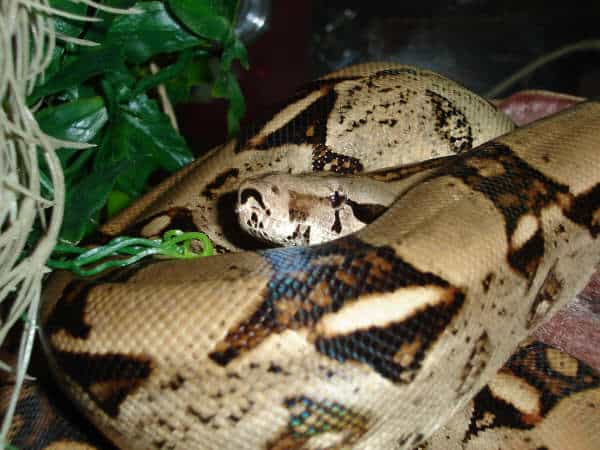
There’s a reason boa constrictors dominate South America. They can do anything: climb trees, swim across rivers, dangle from branches. They can go almost anywhere: forests, meadows, rugged rocky hillsides, and agricultural fields. Boa constrictors don’t shy away from coffee plantations and villages, or fences and railings. Hardiness and toughness is embedded into their DNA. They enjoy the open horizon of grasslands just as much as the cosy comfort of a forest. It helps their confidence that they’re the most powerful constrictor on the face of the Earth. Boa constrictors reach a pounds per square inch (PSI) squeeze force of 25, versus the larger Burmese python at just 6.23.
Boa constrictors slither in a straight line rather than an S-shape. The whole of South America is their dominion, except for Chile. A slow speed of 1mph is a weakness, but their lunges are rapid.
Boa constrictors almost never attack humans. Coiling around your neck and squeezing has no logical reward for them. But they loathe the smell of alcohol, so in case you get in trouble, carry your hip flask everywhere (if you need an excuse), and hold it under a boa constrictor’s nostrils if necessary.
Neighbouring snakes: the Amazon tree boa isn’t completely inflexible, but must have trees to cling to, whether it’s a fully fledged rainforest or a remnant patch of village woodland.
| 4 | Jararaca |
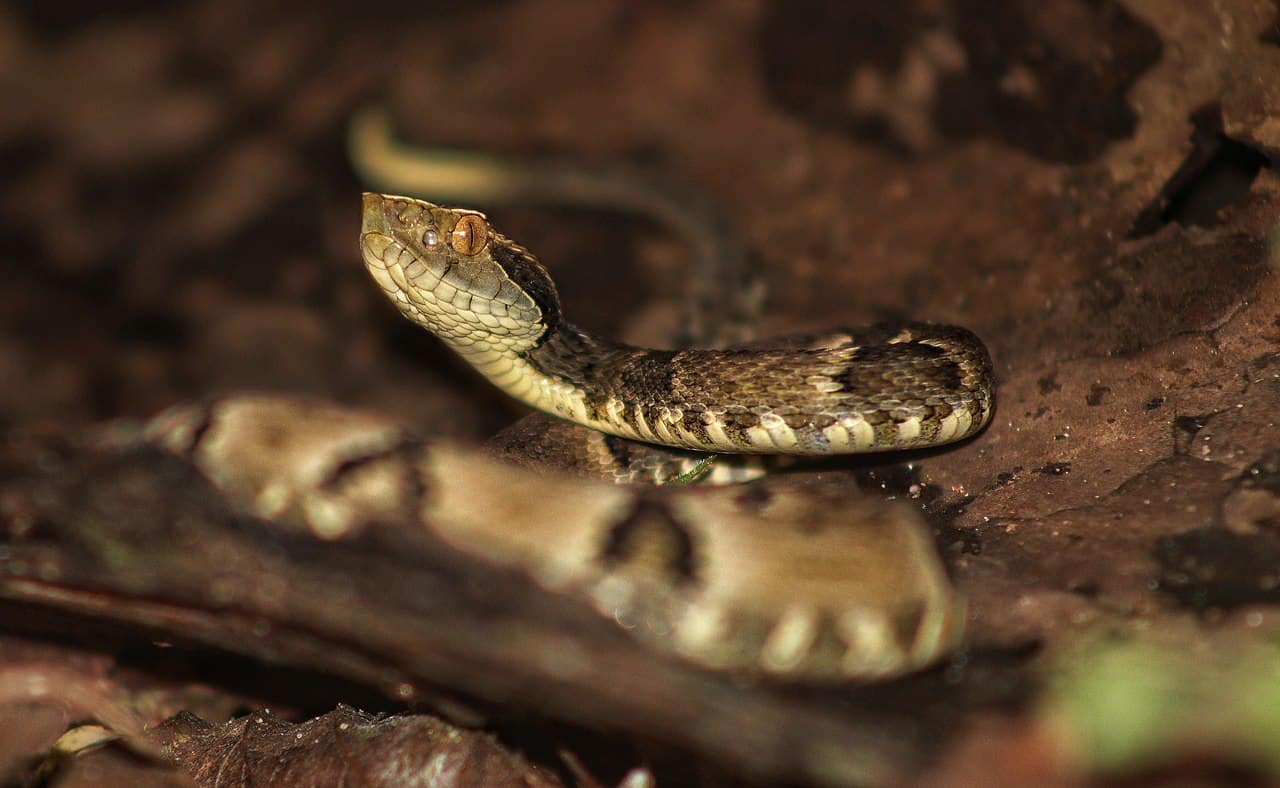
While the boa constrictor coexists peacefully with humanity, the jararaca (Bothrops jararaca) has other ideas. This 1-1.5 metre venomous snake inhabits southeast Brazil, and causes the highest number of snakebites near Sao Paulo.
The reason is simple: flexible habitats. Jararacas don’t confine themselves to a forbidding forest by a highway, which you nervously chuckle about as you drive past (like the jararacussu). Instead, they inhabit forests, fields, agricultural land, towns, woods and virtually anything barring deserts. The one caveat is that they mainly emerge during the wet season.
Jararacas lack neurotoxins, and specialise in necrosis, swelling and coagulopathy, the depletion of blood clotting elements. Their strike is highly accurate, and their diet consists of 71.1% mammals, and 17.8% frogs and toads. Luckily, jararacas are one of 5 species used to manufacture Brazil’s main antivenom. At 50%, they easily contribute the largest share of the antivenom mixture.
Most venomous snakes aren’t villains really. Most would rather live their lives peacefully and avoid humans, but the jararaca – that’s one we’re not sure about.
Neighbouring species: the similarly named jararacussu inhabits dark Atlantic forests only, particularly thick, thorny ones. They shun open ground like cerrado, preferring to live in the shadows.
| 5 | Taiwan stink snake |
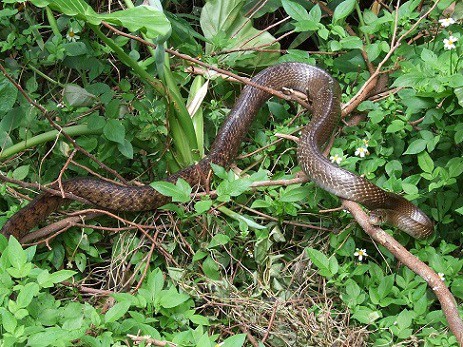
Possibly the most likely snake to bump into in Taiwan. This species is infamous for the intolerable stench it produces when cornered, and has a vicious temperament, staying aggressive even after months in captivity. In Taiwanese snake restaurants (yes, those are a thing), it’s the most frequent species served on menus, though they probably don’t use the western name for it.
The reason is how easy to find they are. Taiwan stink snakes don’t cower in woods, or cling to high branches all day and admire the views. They can do both of those things, but they also appear in meadows, farmlands, river shores and parks. Old farmyards are a particular favourite, due to the abundance of rodents living there. They even find a snug home in dark wooden barns, without asking the owners’ permission. This is an egg-laying species, in batches of 8-14, measuring 3-5cm each. Don’t be surprised to unlock a barn door and find an egg clutch hidden behind a pile of old hay bales.
Taiwanese stink snakes also eat fellow snakes, lizards and birds. Like a black racer, they don’t have a particular ecological niche, so instead, they’re a vagabond snake which roams Taiwan eternally, eating whatever and going wherever.
Neighbouring snakes: the square-headed catsnake of Taiwan is a branch-clinger which requires trees to survive, and avoids open spaces.
| 6 | Black racer |
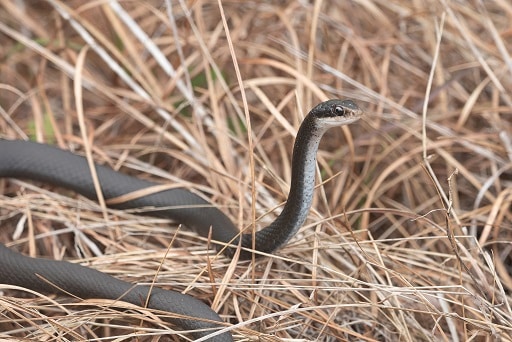
The black racer can’t be ignored when it comes to snakes that go absolutely anywhere. While Florida hosts over 40 snake species, this is the one encountered most by ordinary people, due to its complete comfort in streets, alleyways, back gardens and schoolyards.
In the wild, black racers are equally flexible, inhabiting woods, fields, forests and hillsides, although they might skip the everglades where alligators are firmly in control. Black racers are abundant all over the eastern USA.
One reason black racers appear everywhere is their boundless energy and restlessness. The mud snake might find a cosy swamp to settle in and call home forever, but eastern racers are a transient species which is always exploring somewhere. A confident personality means that they’re not dependent on shelter, although this confidence isn’t necessarily justified. Black racers lack venom, and are popular prey for red shouldered hawks, and even common house spiders. But the benefits of exploring many habitats (like more food choice) clearly outweigh the dangers of being overexposed.
Neighbouring snakes: eastern coral snakes appear only on forest floors, including wireglass flatwoods, oak hammocks, and pine forests.
| 7 | Javan spitting cobra |
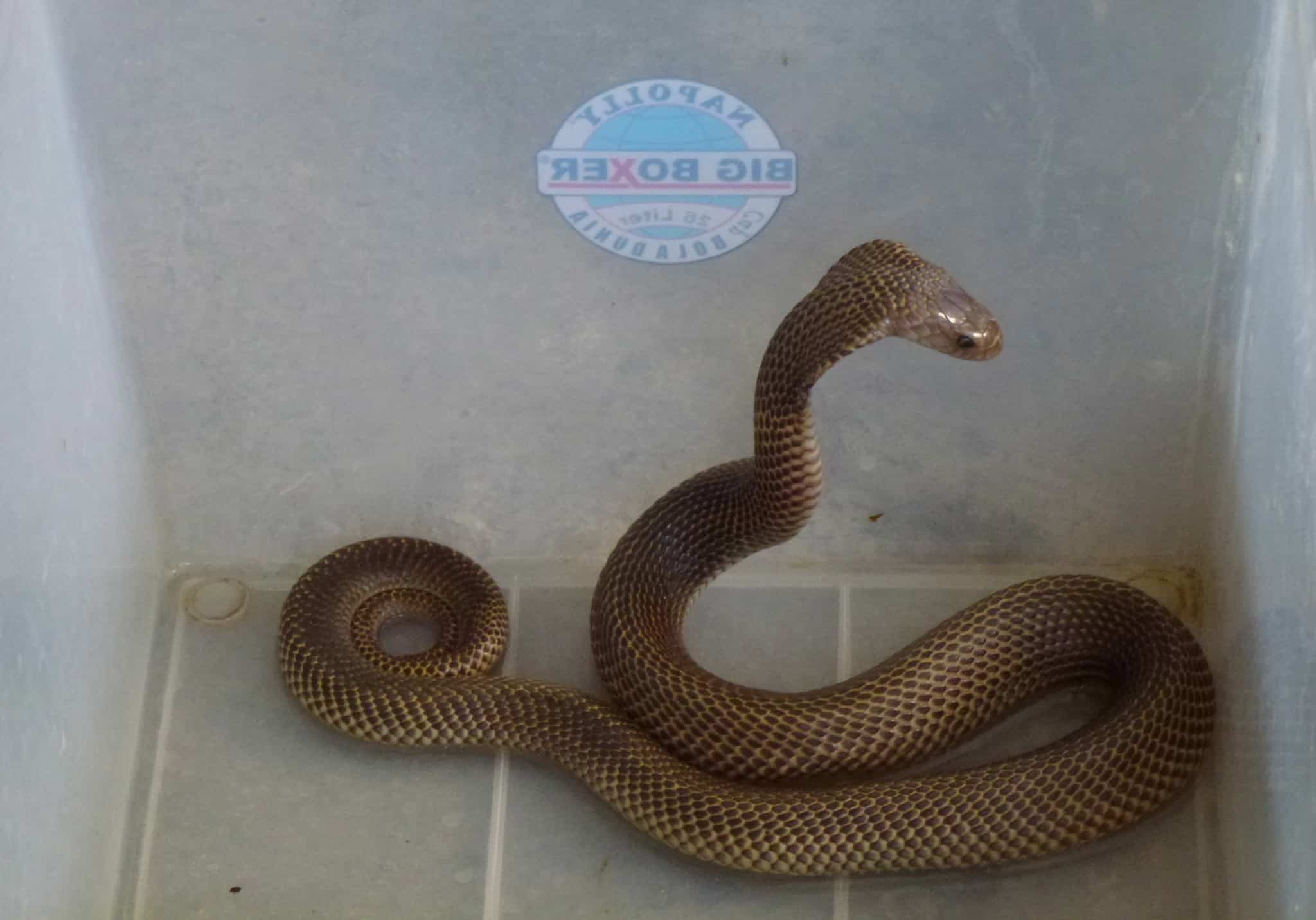
One of the most poorly researched cobras, but it’s obvious to anyone visiting Java that Naja sputatrix appears virtually anywhere. They’re infamous for occupying the Indonesian University in Jakarta, terrifying students on concrete stairwells. They love sparse woods, dry meadows, and drainage ditches near agricultural fields, where they slurp down fellow snakes like the painted bronzeback. They can climb trees and cross rivers, while mainly sticking to the ground.
Javan spitting cobras can poke their heads out of concrete walls, or lurk next to a bridge over a river, blocking people’s paths. In fact, the only thing they’re poor at is staying still. If they have a slight preference, it’s avoiding the thickest, most jungled forests.
The Javan spitting cobra can blind people for 2-3 days by spitting venom into their eyes, so it’s not surprising that they’re so confident. This species simply does not care about the influx of humans into land they’ve occupied for millions of years. They arrogantly assume that they’re still in control, and with a brain-frazzling neurotoxic venom, it’s hard to argue.
Neighbouring species: the pink-headed reed snake sticks to moist soils in thick forests, often by a stream, hoping to go unnoticed by the wider world, another strategy which has succeeded.
| 8 | Salmon-bellied racer |
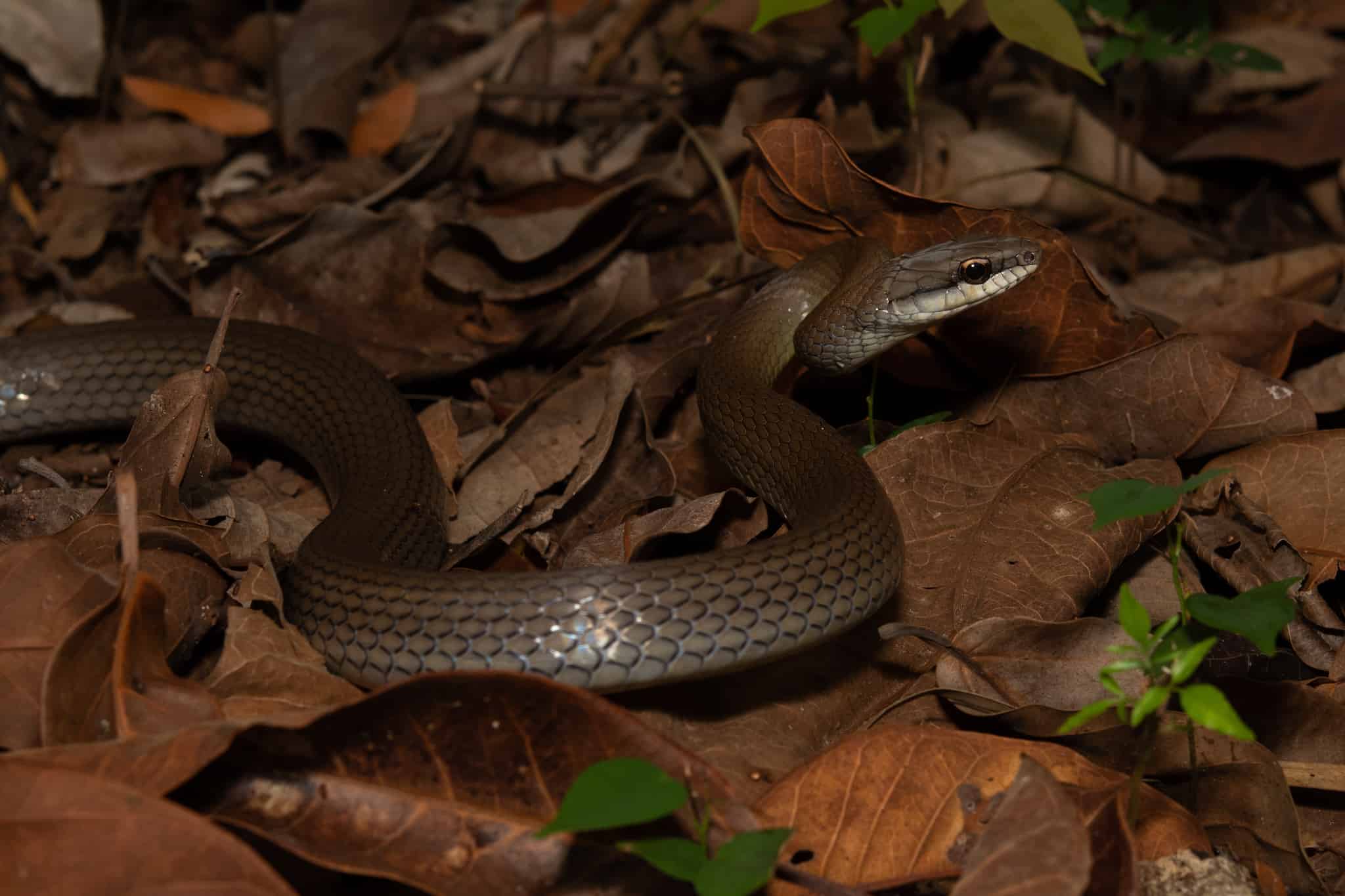
The salmon-bellied racer inhabits most of Central America, from Guatemala to Costa Rica. They measure 1.5 metres, and are a non-venomous constrictor, which forages actively for prey rather than using crushing ambush.
Salmon-bellied racers must survive through sheer focus and determination, never letting an opportunity go to waste, and this quest takes them through forest, field, farm, woods and deforested hillside. They’re on a constant grand tour of Central America, and regularly pass through villages to the amusement, sometimes fright of locals. Salmon-bellied racers mainly ignore humans, co-existing peacefully as long as you don’t harass them.
However, this snake isn’t overconfident, and knows that it must fight to survive. When a bird swoops in for a meal, the salmon-bellied racer will bite and snap back, convincing them to give up. You’d think they’d want to let them escape, but instead, Mastigodryas melanolomus grabs hold of the fleeing bird. They latch on with an unbreakable grip, and constrict them to death. The goal is to make birds fear going anywhere near them, to make every assault a risk they must calculate.
Neighbouring species: the orange-bellied glasstail lives only in deep forests, mainly in Costa Rica, occasionally in sheltered cacao plantations.
| 9 | Greater sea snake |
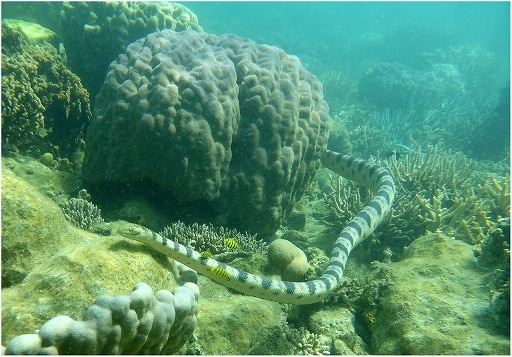
Technically, the greater sea snake isn’t flexible in its habitats at all. If you scooped one up and placed it on land, it would have no idea what to do. But within the sea, studies reveal it to be one of the most flexible. Along Australian coastlines, greater sea snakes can switch between coral reefs, seagrass beds and sandy flats at will. A 2021 study observed New Caledonia’s populous Baie des Citrons, a paradise of underwater serpents. The turtle-headed sea snakes stuck exclusively to coral reefs, while Dubios’ sea snakes only inhabited shallow waters. Greater sea snakes inhabited both deep and shallow waters, and all habitat types.
This species primarily preys on catfish, and are highly attuned to them. Even if this brings them to a giant eel’s lair, or the cursed remains of a sunken pirate ship, they’ll probably keep exploring. However, they’re not reckless lunatics. During tiger shark season, when waters are warmer, they shift position to the sheltered inner seagrass beds. This intelligence may explain why they’re the “greater” sea snake, and so wide ranging.
Neighbours: turtle-headed sea snakes eat fish eggs exclusively, and stick to coral reefs where these are hidden.
| 10 | Madagascan hognose snake |
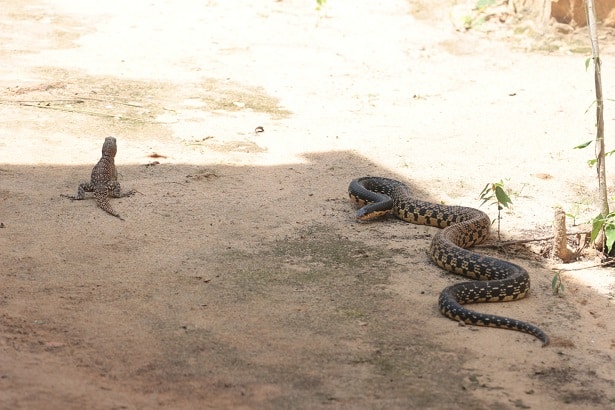
Madagascar lacks any dangerously venomous snakes, but it’s still a total snakepit. There’s the slender smooth snake hiding in pristine forest floors, and there’s the Madagascan hognose snake, which is much more visible to tourists and villagers alike. This snake can exceed 1.8 metres, and comfortably inhabits dry fields, woodlands, villages and even city outskirts.
Over the last thousand years, towns have sprung up and forests have been replaced with cocoa plantations, but the Madagascan hognose snake hasn’t changed. It’s still there, patiently roaming the countryside for reptiles, knowing its role in the universe, not attacking innocent people, but not hesitating to defend itself if a fight arrives either.
Leioheterodon madagascariensis is good at blocking roads, resting alertly on their dusty surfaces in order to ambush lizards. The precise characteristics that make them flexible are unknown, but L. madagascariensis has no qualms about being visible to farmers, villagers or tourists. This species has no relation to US hognose snakes.
Neighbouring snakes: Dumeril’s boa, the resident giant constrictor, is found in dry leafy woodlands, where its excellent camouflage can properly take effect.
